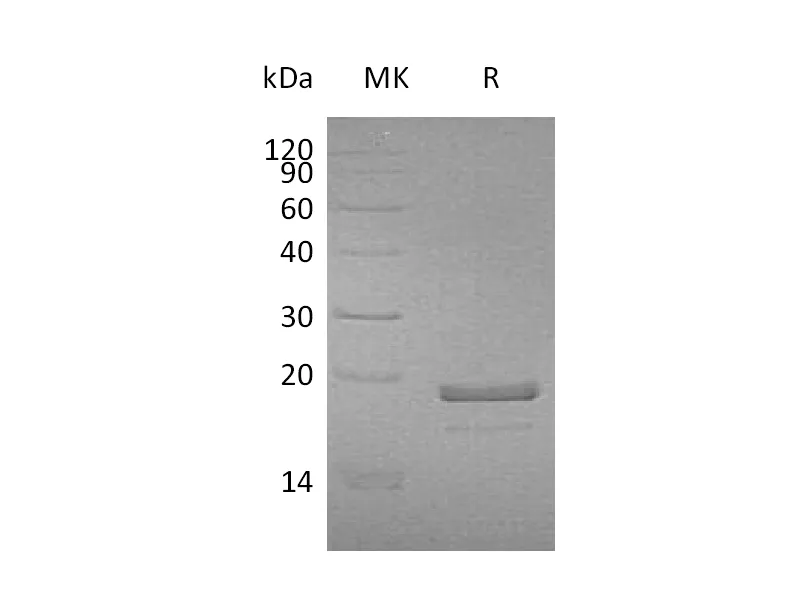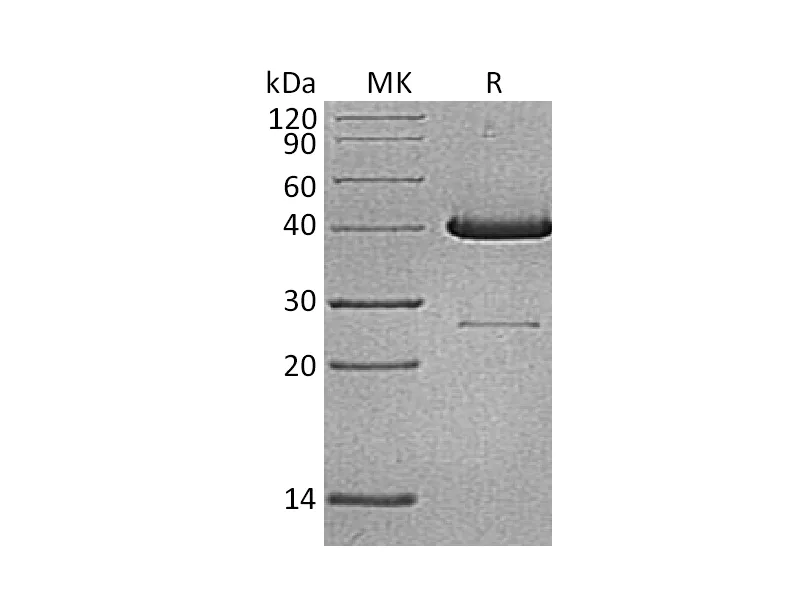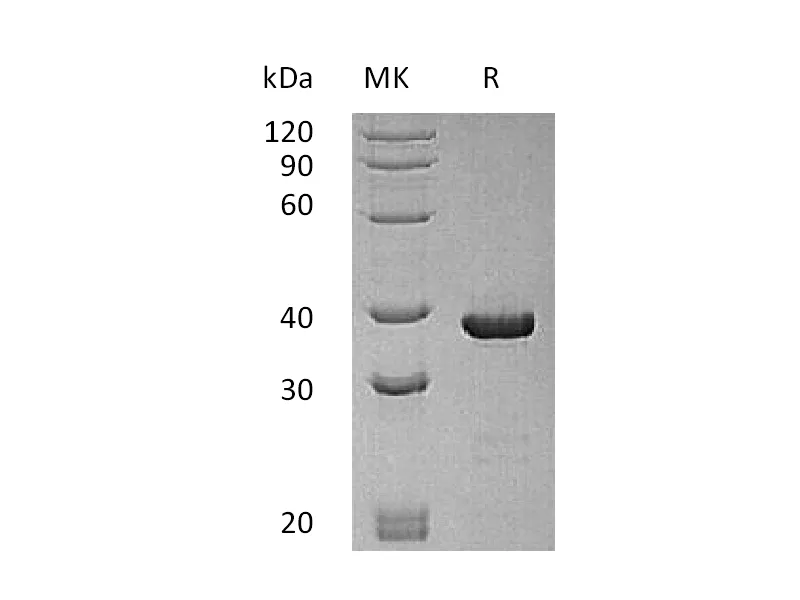| 产品名称 |
Recombinant Mouse SLAMF5 (C-6His) |
| 英文名称 |
SLAMF5/SLAM Family Member 5/CD84 |
| 纯度 |
Greater than 95% as determined by reducing SDS-PAGE |
| 内毒素 |
<1 EU/µg as determined by LAL test. |
| 蛋白构建 |
Recombinant Mouse SLAM Family Member 5 is produced by our Mammalian expression system and the target gene encoding Lys22-Pro223 is expressed with a 6His tag at the C-terminus. |
| Accession |
AAD02273.1 |
| 表达宿主 |
Human Cells |
| 种属 |
Mouse |
| 预测分子量 |
23.8 KDa |
| 制剂 |
Lyophilized from a 0.2 μm filtered solution of PBS, pH 7.4. |
| 运输方式 |
The product is shipped at ambient temperature.Upon receipt, store it immediately at the temperature listed below. |
| 稳定性&储存 |
Store at ≤-70°C, stable for 6 months after receipt.Store at ≤-70°C, stable for 3 months under sterile conditions after opening. Please minimize freeze-thaw cycles. |
| 复溶 |
Always centrifuge tubes before opening.Do not mix by vortex or pipetting.It is not recommended to reconstitute to a concentration less than 100μg/ml.Dissolve the lyophilized protein in distilled water.Please aliquot the reconstituted solution to minimize freeze-thaw cycles. |
| 分子别名 |
| SLAM family member 5; Cd84; Leukocyte differentiation antigen CD84; Signaling lymphocytic activation molecule 5; CD84; Ly-9B; SLAMF5; CD84 antigen; CD84 molecule; SLAM family member 5 |
| 背景介绍 |
| CD84, also called SLAMF5, is a member of the CD2 subgroup of the immunoglobulin receptor superfamily. Members of this CD2 subgroup mediate signal transduction through the interaction of its immunoreceptor tyrosine-based switch motifs (ITSM) in the intracellular region and the SH2 domain of adaptor molecules SAP (SLAM-associated protein) and EAT-2 (EWS-activated transcript 2), and accordingly modulate both adaptive and innate immune responses. CD84 expression has been documented on several hematopoietic cell types, including monocytes, macrophages, dendritic cells, B lymphocytes, and platelets. Activation of cell surface CD84 initiates a signaling cascade involving its intra-cytoplasmic tyrosine residues that results in Bcl-2 upregulation, which in turn enhances cell survival. Either immunoneutralization or blockade of CD84 with a CD84 extracellular domain protein fragment induces cell death in vitro and in vivo. |
注意事项
本司产品仅用于科研,不用于临床诊断和治疗




